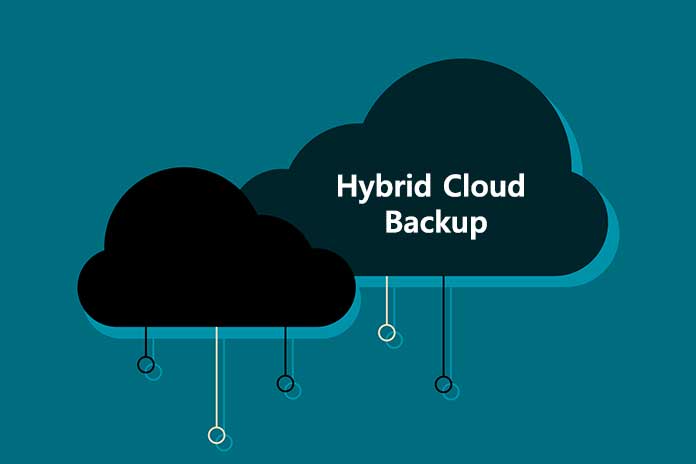Replication In The Cloud Shows Its Strengths, Particularly In The Case Of Ransomware Attacks
For backup & recovery, many companies trust their own data centers rather than the public cloud. There may be good reasons for this depending on the scenario, which are discussed in more detail below. First of all, however, it is helpful to understand the public benefits of the public cloud as a backup & restore platform.
Primarily, there is no need to set up secondary data centers for disaster recovery. In this way, a backup platform can be set up and used much faster. Outsourcing to the cloud also has operational advantages, such as significantly reduced maintenance costs, fewer patches, etc. The use of the public cloud also leads to an automatic geographical separation of the data centers. After all, the cloud also offers advantages in an emergency. If the primary data center has been completely paralyzed, the affected company can complete the recovery via the cloud.
Hybrid Cloud
In the rarest of cases, the public cloud will be the only backup location. Instead, a hybrid cloud is a rule. The advantages of the hybrid data protection approach are improved flexibility, support, availability, and, above all, more security:
- IT keeps copies available on site for quick disaster recovery but at the same time also stores documents at an external location.
- This external data can be seen, managed, and used for recovery by the users.
- When local and external copies are correctly synchronized, the backups are optimally protected and highly available.
- Data and applications are backed up quickly and regularly on site.
Also Read: Distributed Analyzes Beyond The Cloud
RTO And RPO
There is a wide range of cloud-based, and hybrid data protection offers on the market. However, there is a risk that some will lose track of things with the variety of price lists and service level agreements. When data backup is relocated to the hybrid cloud, there is much more to consider than when backing up in the data center. Organizations can use these best practices in their planning, among others:
- Use locally available hard drives as the primary backup destination. They ensure the fastest backup and recovery and optimize the recovery time objectives (RTOs) and recovery point objectives (RPOs) defined for the rescue.
- Define the scope of the cloud services. Some companies only need replication, some only archive, and some both.
- Prioritize servers and applications. Which applications, data, and complete machines will be the first to be needed after the recovery after a total failure? What failure tolerances apply to them?
- Use a single solution for all types of restores. Restoring data from physical, virtual, and cloud storage devices using different tools means more time and effort.
The aim of the backup should be to restore entire systems, applications, and data with RTOs of minutes and the least possible disruption to users. RPOs should never be longer than an hour to minimize the impact on protected servers. Short RPOs make the windows for data loss more minor and reduce the amount of data backup and the corresponding network traffic.
Forever Backups
For acceptable performance, backup and recovery solutions should support the granular recovery of files and applications such as Microsoft Active Directory, Exchange, and SharePoint. In addition, incremental forever backup should reduce the requirements for WAN / Internet bandwidths and create optimal conditions for transferring large amounts of data. Block-based incremental forever backups are more storage efficient than file-based incremental forever backups and use even less network bandwidth. Virtual machines (VM) must also be restored quickly and easily, namely complete VMs, not just the data in them.
Immediate Recovery
There are several ways of doing what is known as “instant recovery.” The solution of choice should enable instant recovery to be physical and virtual devices. The answer has been proven to reconstruct the operating system volume on a virtual or physical target device. It then makes backed-up data available to this restored operating system on request. As soon as the active system volume is available again, backed-up data can be made available in the form of books and files and restored at the request of users. Finally, the product should support bare metal recovery (BMR) and file-level restoration (FLR) from the archive. BMR relieves the administrator because both the server configuration and the installed software are retained. FLR allows users to restore individual files without having to wait for the entire image to be fixed.
Also Read: What Is pCloud And Its Features?
The Power Of The Public Cloud
Replication in the cloud shows its strengths, particularly in the case of ransomware attacks. Suppose a company has been the victim of a ransomware attack, but that company has previously replicated multiple backups to the cloud. In that case, system administrators can review those backups made at different times and pinpoint a specific point when the most likely healthy data was replicated. You can then mount the volume as write-protected, check it for malware, and then use it for recovery. Companies can thus meet higher business continuity requirements without high costs. IT teams can act more flexibly and protect data externally for more extended periods.


